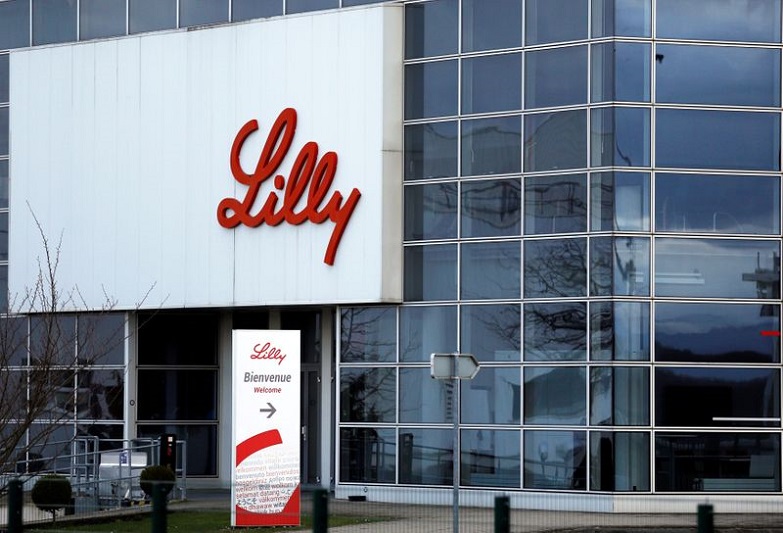Benzinga - by Benzinga Insights, Benzinga Staff Writer.
In today's fast-paced and competitive business landscape, it is essential for investors and industry enthusiasts to thoroughly analyze companies before making investment decisions. In this article, we will conduct a comprehensive industry comparison, evaluating Eli Lilly (NYSE:LLY) against its key competitors in the Pharmaceuticals industry. By examining key financial metrics, market position, and growth prospects, we aim to provide valuable insights for investors and shed light on company's performance within the industry.
Eli Lilly Background Eli Lilly is a drug firm with a focus on neuroscience, cardiometabolic, cancer, and immunology. Lilly's key products include Verzenio for cancer; Mounjaro, Zepbound, Jardiance, Trulicity, Humalog, and Humulin for diabetes; and Taltz and Olumiant for immunology.
| Eli Lilly and Co | 120.95 | 56.49 | 18.81 | -0.52% | $0.96 | $7.64 | 36.84% |
| Novo Nordisk A/S | 42.14 | 32.81 | 15.19 | 22.01% | $28.51 | $55.85 | 36.95% |
| Merck & Co Inc | 902.93 | 7.77 | 5.48 | 11.87% | $6.95 | $11.7 | 6.71% |
| Novartis AG | 25.30 | 4.54 | 4.65 | 19.99% | $4.18 | $8.75 | 7.39% |
| AstraZeneca PLC | 34.73 | 5.47 | 4.55 | 3.68% | $3.33 | $9.4 | 4.64% |
| Zoetis Inc | 38.50 | 17.09 | 10.48 | 12.28% | $0.9 | $1.51 | 7.44% |
| GSK PLC | 13.39 | 4.95 | 2.18 | 2.64% | $1.78 | $5.63 | -1.17% |
| Takeda Pharmaceutical Co Ltd | 37.33 | 0.98 | 1.59 | -0.69% | $202.28 | $699.51 | 4.07% |
| Viatris Inc | 7.85 | 0.68 | 0.93 | 1.59% | $1.22 | $1.69 | -3.34% |
| Dr Reddy's Laboratories Ltd | 19.14 | 3.73 | 3.68 | 5.29% | $22.42 | $42.2 | 6.57% |
| Jazz Pharmaceuticals PLC | 148.06 | 2.22 | 2.26 | 4.19% | $0.33 | $0.87 | 3.35% |
| Amphastar Pharmaceuticals Inc | 20.62 | 4.25 | 4.62 | 8.31% | $0.09 | $0.11 | 50.3% |
| Average | 117.27 | 7.68 | 5.06 | 8.29% | $24.73 | $76.11 | 11.17% |
th, td { padding: 8px; text-align: left; }
th { background-color: #293a5a; color: #fff; text-align: left; }
tr:nth-child(even) { background-color: #f2f4f8; }
tr:hover { background-color: #e1e4ea; }
td:nth-child(3), td:nth-child(5) { text-align: left; }
.dividend-amount { font-weight: bold; color: #0d6efd; }
.dividend-frequency { font-size: 12px; color: #6c757d; } Through a meticulous analysis of Eli Lilly, we can observe the following trends:
- Notably, the current Price to Earnings ratio for this stock, 120.95, is 1.03x above the industry norm, reflecting a higher valuation relative to the industry.
- It could be trading at a premium in relation to its book value, as indicated by its Price to Book ratio of 56.49 which exceeds the industry average by 7.36x.
- The stock's relatively high Price to Sales ratio of 18.81, surpassing the industry average by 3.72x, may indicate an aspect of overvaluation in terms of sales performance.
- The Return on Equity (ROE) of -0.52% is 8.81% below the industry average, suggesting potential inefficiency in utilizing equity to generate profits.
- The company has lower Earnings Before Interest, Taxes, Depreciation, and Amortization (EBITDA) of $960 Million, which is 0.04x below the industry average. This potentially indicates lower profitability or financial challenges.
- Compared to its industry, the company has lower gross profit of $7.64 Billion, which indicates 0.1x below the industry average, potentially indicating lower revenue after accounting for production costs.
-
The company's revenue growth of 36.84% is notably higher compared to the industry average of 11.17%, showcasing exceptional sales performance and strong demand for its products or services.
The debt-to-equity (D/E) ratio assesses the extent to which a company relies on borrowed funds compared to its equity.
Considering the debt-to-equity ratio in industry comparisons allows for a concise evaluation of a company's financial health and risk profile, aiding in informed decision-making.
When evaluating Eli Lilly alongside its top 4 peers in terms of the Debt-to-Equity ratio, the following insights arise:
- Among its top 4 peers, Eli Lilly has a higher debt-to-equity ratio of 1.8.
- This implies a greater reliance on debt financing, which can expose the company to higher financial risk and potential challenges.
This article was generated by Benzinga's automated content engine and reviewed by an editor.
© 2024 Benzinga.com. Benzinga does not provide investment advice. All rights reserved.
